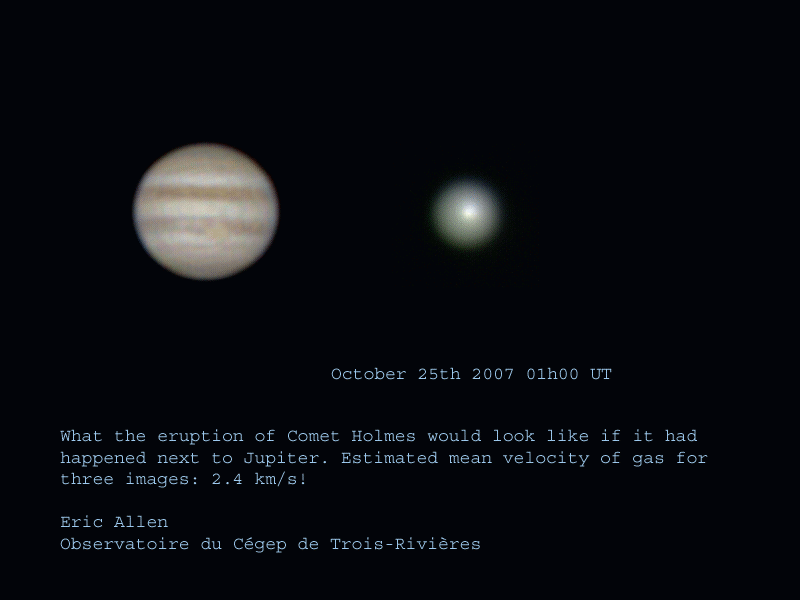First comet Encke was hit by a solar flare from the sun. Solar flares are large "earthquakes" from the sun due to fluctuations in the magnetic field that usually keeps them in.

This is a good representation of a solar flare & it's prominence relative to the size of the Earth (remember a million Earths could fit inside the sun). This gives you an idea of the magnitude of these things. A solar flare pointed at earth in 1989 completely shut down Quebec with a sudden burst of electromagnetic radiation, and more recently (but less destructive) in 2003, Detroit & New York.
Smaller flares are what causes the aurora borealis, or Northern Lights. But I digress.
The solar wind generated from these solar flares travel at an astounding 900,000 miles per hour! Normally we don't watch the wind, since it really isn't that exciting to watch solar particles travel in the open vacuum of space. About a month ago astrophysicists were doing some measurements on a little known comet called Comet Encke, when a blast of solar wind hits it and rips off it's tail! It quickly makes a new tail and returns to it's normal look. No one had even heard of this happening before, and to catch it on film it amazing! I posted the video below. The flare moves quick so you may have to play it a couple of times to catch it all.
The other comet related news was from the Comet Holmes. Also a little known comet, it all of the sudden brightened over a million times in a matter of 2 days! It is now about as bright and large as Jupiter in the sky! They think the comet is breaking up and the debris is causing the increased brightness. The comet has also changed color from gold to green, and also developed a blue ion tail. No one is quite sure what is going on with this comet, but it should be fun to watch it develop!
I won't say it's "easy" to pick out in the sky, but it can be done. Around 8-9pm, if you look straight East and find a cluster of stars called the Pleiades Cluster. It's a cluster of a few hundred stars in a very small area. From there you can look straight left and find the comet. Or from Orion (near the horizon), you can look North to find Mars, then left to find the comet. They give good directions to find it at this website also: http://www.skyandtelescope.com/observing/home/10862521.html.
Here is one photo of the comet and it's relationship (in size, not location) to Jupiter...

You can click on the image to get a short animation of the comet growing brighter.
Happy Sky Watching!

3 comments:
Thank for the lovely astronomy lesson Professor Syring. :)
Happy sky-watching...is that what that wierd guy on PBS used to say?
It was Jack Horkheimer on Star Gazer.
He said "Keep - Looking - Up!"
Yeah, that's nerdy...:)
Post a Comment